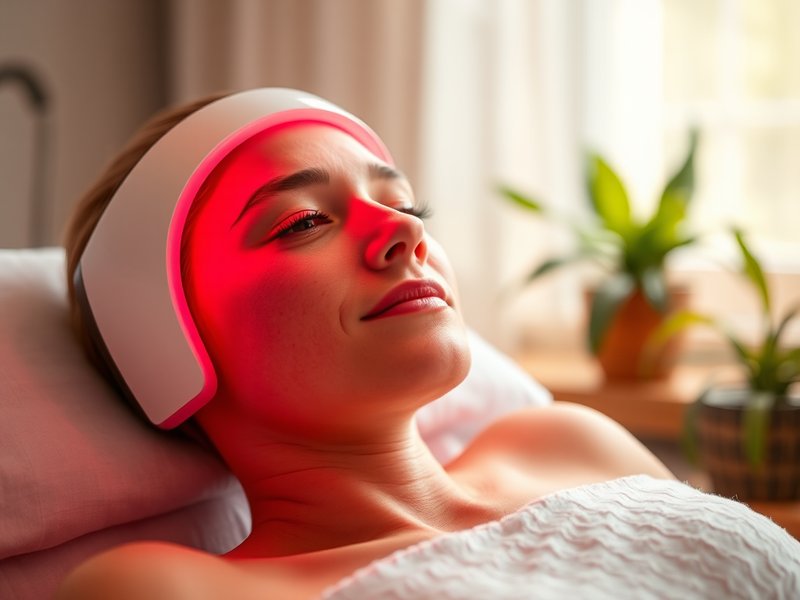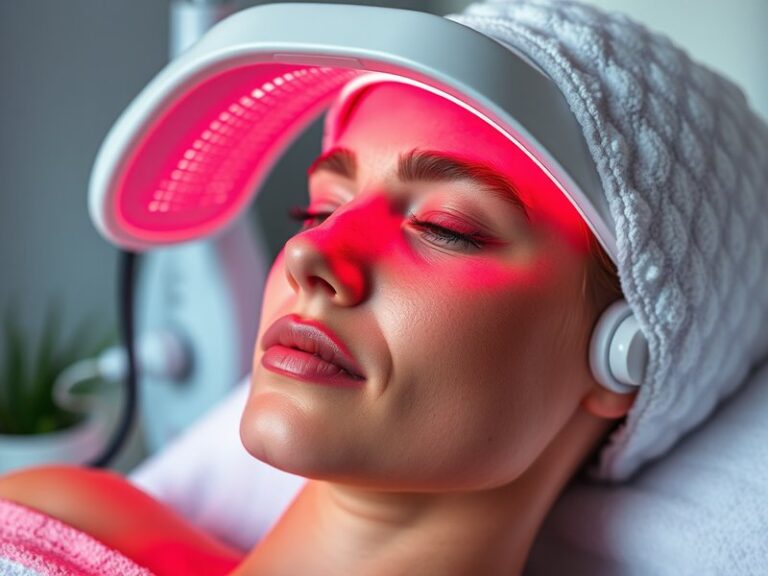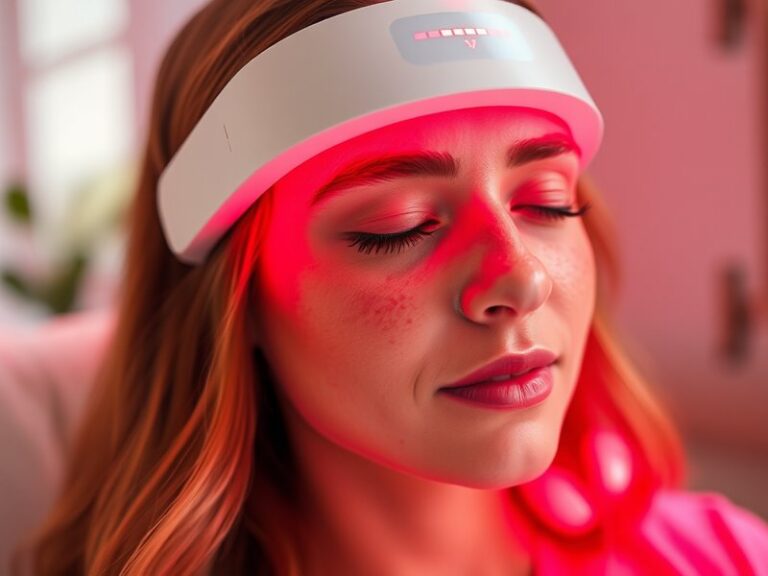Does Red Light Therapy Kill Scabies?
Does Red Light Therapy Kill Scabies?
Can red light therapy be an effective treatment for scabies?
In this article, we will explore the connection between red light therapy and scabies treatment. Scabies is a skin condition caused by tiny mites that lead to intense itching and discomfort. Traditional treatments typically involve topical insecticides, but many are curious about alternative therapies, such as red light therapy. We will discuss what red light therapy is, its benefits, considerations, and whether it’s a viable option for treating scabies.
Key Takeaways
- Red light therapy may help alleviate symptoms associated with scabies but is not a proven standalone treatment.
- Traditional treatments like permethrin cream remain the standard for eradicating scabies mites.
- Before considering red light therapy, it is essential to consult with a healthcare provider to determine the best treatment plan.
What is Red Light Therapy?
Red light therapy (RLT) is a non-invasive treatment that uses low-level wavelengths of red light to promote healing and reduce inflammation in the body. Originally developed for medical conditions like wound healing, RLT is gaining popularity for various applications, including skin rejuvenation and pain relief.
RLT operates by enhancing cellular energy production in mitochondria, leading to improved cellular function and resilience. It has been researched for its effectiveness in treating conditions such as acne, psoriasis, and even hair loss. However, its effects on scabies are less clear and merit further exploration.
What are the Benefits of Red Light Therapy?
Understanding the benefits of red light therapy can help individuals make informed decisions about its potential applications.
Promotes Wound Healing
RLT is known to stimulate blood flow and enhance tissue repair, potentially benefiting those with scabies by improving skin healing following mite irritation.
Discover the insights in Does Ultra Slim Work?
Reduces Inflammation
One of the notable advantages of RLT is its anti-inflammatory properties. It can ease the skin irritation and redness often associated with scabies, providing symptomatic relief.
Enhances Skin Health
Regular use of RLT can improve overall skin appearance, which may help mitigate the outward effects of scabies, such as redness and swelling.
Relieves Pain and Discomfort
Some users report a reduction in skin discomfort and itching when using RLT, providing a comforting alternative or adjunct therapy alongside traditional treatments.
Is it Possible to Use Red Light Therapy to Kill Scabies?
While red light therapy shows promise in alleviating some symptoms associated with scabies, it is not designed to kill the mites directly. Traditional treatments like topical insecticides are specifically formulated to target and eliminate the scabies mites.
What are the Advantages of Using Red Light Therapy?
Incorporating red light therapy into a treatment plan for scabies may offer some advantages:
Complimentary Treatment
RLT can act as a supplementary therapy that helps to soothe irritated skin, potentially improving the overall recovery experience.
Non-Invasive Approach
Unlike some topical treatments that can irritate already sensitive skin, RLT is a non-invasive option with minimal side effects.
Accessibility
Red light therapy devices are becoming more readily available for home use, making it an accessible option for individuals looking for adjunct therapies.
Supportive Healing
Using RLT may expedite the healing process following the elimination of scabies, promoting healthy skin regeneration.
What are the Disadvantages of Using Red Light Therapy?
While there can be benefits, it is also important to consider the disadvantages associated with relying on RLT for scabies management.
Ineffectiveness Against Mites
Red light therapy has not been proven to kill scabies mites, making it an insufficient standalone remedy.
Potential Cost
High-quality red light therapy devices can be expensive, and frequent sessions may be needed to see any benefits, which could be a financial burden.
Not a Replacement for Traditional Treatments
Relying solely on RLT may lead to prolonged discomfort and skin complications, as it should not replace proven treatments for scabies.
What are the Things to Consider Before Trying Red Light Therapy?
Before diving into red light therapy as a treatment for scabies, there are several important considerations to keep in mind.
Consult Your Healthcare Provider
Before starting any new treatment, especially for a condition like scabies, consulting a healthcare provider is crucial to tailor the best treatment approach for individual cases.
Understand the Limitations
While RLT may offer symptomatic relief, it does not address the root cause of scabies. Be aware that traditional treatments should still be pursued alongside complementary therapies.
Assess Skin Sensitivity
RLT may cause some skin reactions in sensitive individuals. Testing on a small area first can help gauge skin tolerance before wider application.
What are the Alternatives to Red Light Therapy for Scabies?
If red light therapy is not the right fit for scabies treatment, several traditional and alternative options are available.
Topical Medications
Medications like permethrin and lindane are effective treatments that target and kill scabies mites. These are typically the first line of treatment recommended by medical professionals.
Oral Medications
In more severe cases, oral medications like ivermectin may be prescribed. These can help eradicate the infestation from within and offer a systemic approach to treatment.
Home Remedies
Some individuals explore home remedies, such as tea tree oil or sulfur creams, which may alleviate symptoms but lack evidence for efficacy against the mites directly.
Essential Oils
Products containing natural essential oils, like neem oil or clove oil, are believed by some to have anti-parasitic properties but should be approached cautiously and discussed with a healthcare provider.
Conclusion: Is it Recommended to Use Red Light Therapy for Scabies?
In summary, while red light therapy may provide some symptomatic relief for individuals suffering from scabies, it is not a replacement for established treatments that effectively kill the mites. Incorporating this therapy could complement typical treatments, aiding in skin healing and reducing inflammation, but it should be approached with caution and ideally under medical guidance.
Find all the details in Do At-Home Red Light Therapy Work?
Frequently Asked Questions
Can red light therapy be used on all skin types?
Yes, red light therapy is generally safe for all skin types. However, individuals with specific skin conditions or sensitivities should consult a healthcare provider before starting treatment.
How often should I use red light therapy for scabies?
While there is no defined regimen for using RLT specifically for scabies, many users find benefit in using it several times a week. Consulting a healthcare provider can help create a tailored schedule.
Are there side effects associated with red light therapy?
RLT is widely considered safe, with minimal side effects such as temporary redness or warmth in the treated area. However, if any adverse reactions occur, prompt consultation with a healthcare provider is advised.
Is red light therapy effective for other skin conditions?
Yes, RLT has shown promise in treating various skin conditions, including acne, psoriasis, and rosacea, due to its anti-inflammatory and healing properties.
Will red light therapy replace my current scabies treatment?
No, red light therapy should not replace prescribed treatments for scabies but can be utilized as a complementary therapy under the guidance of a healthcare provider.






